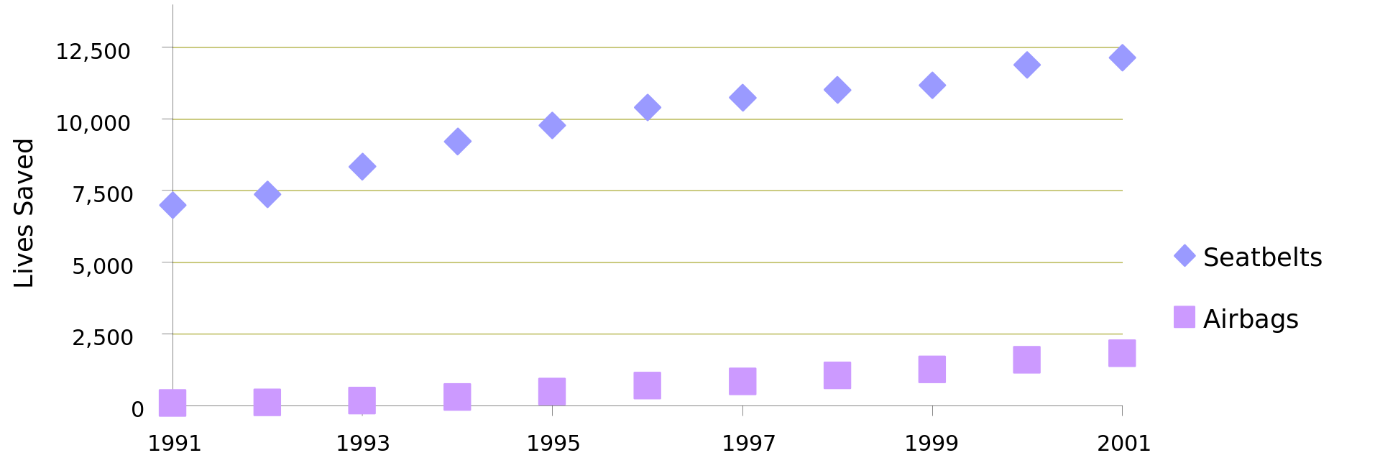Meet Talus. You won’t recognise him, but your ancestors may well have. Or at least someone resembling him. And if they did, they would have made a rapid judgement about whether he was a threat, opportunity or benign. A female ancestor may have perceived Talus as a potential mate, whereas a male one as competition for a mate. Instinctively, we, like them, have evolved to weight threats more than opportunities, perhaps because opportunities will recur but if you don’t take a potential threat seriously once, it might be your only time. In the binary world of your genes, they just want to survive. You are reading this today in part because of these ancestral instincts.
Fast forward to the near past. Around 150 years ago, the internal combustion engine was invented, enabling the development of automobiles. Initially speeds were limited but they quite quickly increased to the point where collisions led to occupant injury and fatality, often as a result of being unrestrained when travelling. In 1946, an American neurologist, Hunter Shelden, started noticing the high number of head injuries coming through his treatment room at Huntington Memorial Hospital in Pasadena, California. This led him to investigate early seat belts with primitive designs and propose a retractable one as an improvement.
Soon manufacturers started to offer retractable seatbelts as a factory option, including Ford in 1955. They were influenced by studies which had started to show that occupants could reduce their risk of serious injury or death significantly in a collision when wearing one. However, they were not popular with the general public, with only 2% of Ford buyers choosing to pay for seatbelts in 1956. To my mind, the seat belts were a modern equivalent of Talus – a stranger who was seen as a threat (or at least discomfort) rather than an opportunity. Swedish manufacturer Saab then introduced seat belts as standard equipment in 1958 and this initiative was rapidly copied by others.
Based on ever more evidence that wearing seat belts saves lives, legislation and public information tried to increase uptake. Indeed, US NHTSA (National Highway Traffic Safety Administration) analysis revealed that around 10,000 lives were saved in the US annually in the 1990s by occupants wearing seatbelts.

By 2020, seat belt use in the US reached 90%. If this number was ~10% in 1960 and increased smoothly from there, by my estimation several hundred thousand Americans owed their lives to wearing seat belts since they were introduced. Wow!, amazing! you may be thinking. What a success! But how much greater a success it would have been if this adoption process could have been speeded up.
Fast forward again to the present day. HAZOP software has the potential to save future lives, by improving the efficiency and effectiveness of the technique. I reckon that the HAZOPs I’ve chaired over the past 10 years have cumulatively saved at least several future lives. I even sometimes rather whimsically think of myself as a real life ‘Minority Report’ Pre-crime policeman.
Multiply that by the number of HAZOP chairs out there. You get the picture. However, HAZOP software is again the Talus on the horizon. I remember at the start of COVID, several HAZOP chairs were scornful about the prospect of carrying out HAZOPs via Zoom. Post-pandemic adoption levels are high, driven at least partly by the fact that HAZOPs had to be done and doing them in the traditional way was, at least temporarily, not possible. Our initial discomfort and apprehension (mine included) was gradually eroded by exposure until it felt natural.
However, HAZOP software does not have such a route to rapid adoption. How can it best go from Talus on the horizon to Talus as part of the community? I have some ideas to consider:
I’m sure there’s more, but this may be a start to help our modern-day Talus become a welcome and productive part of the team.
